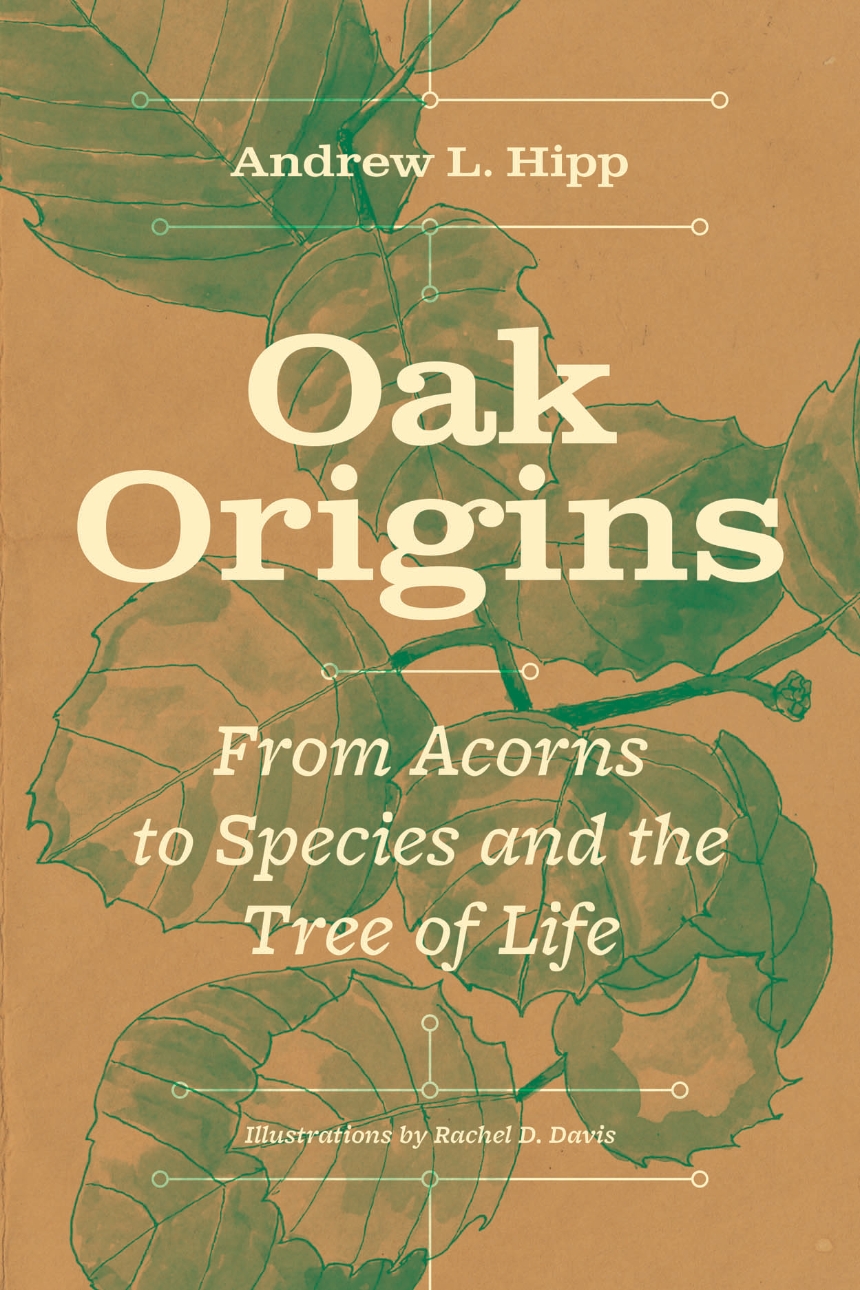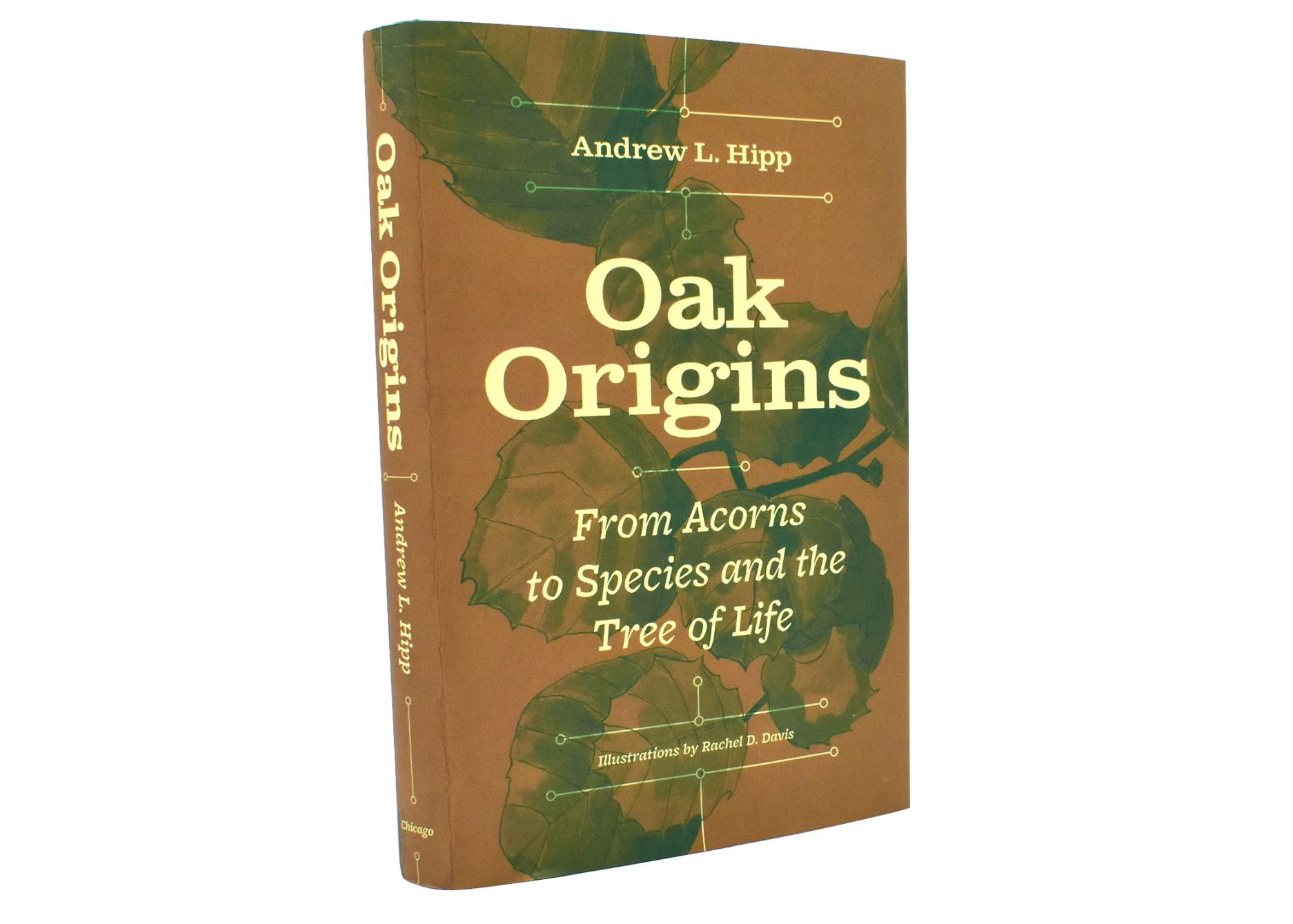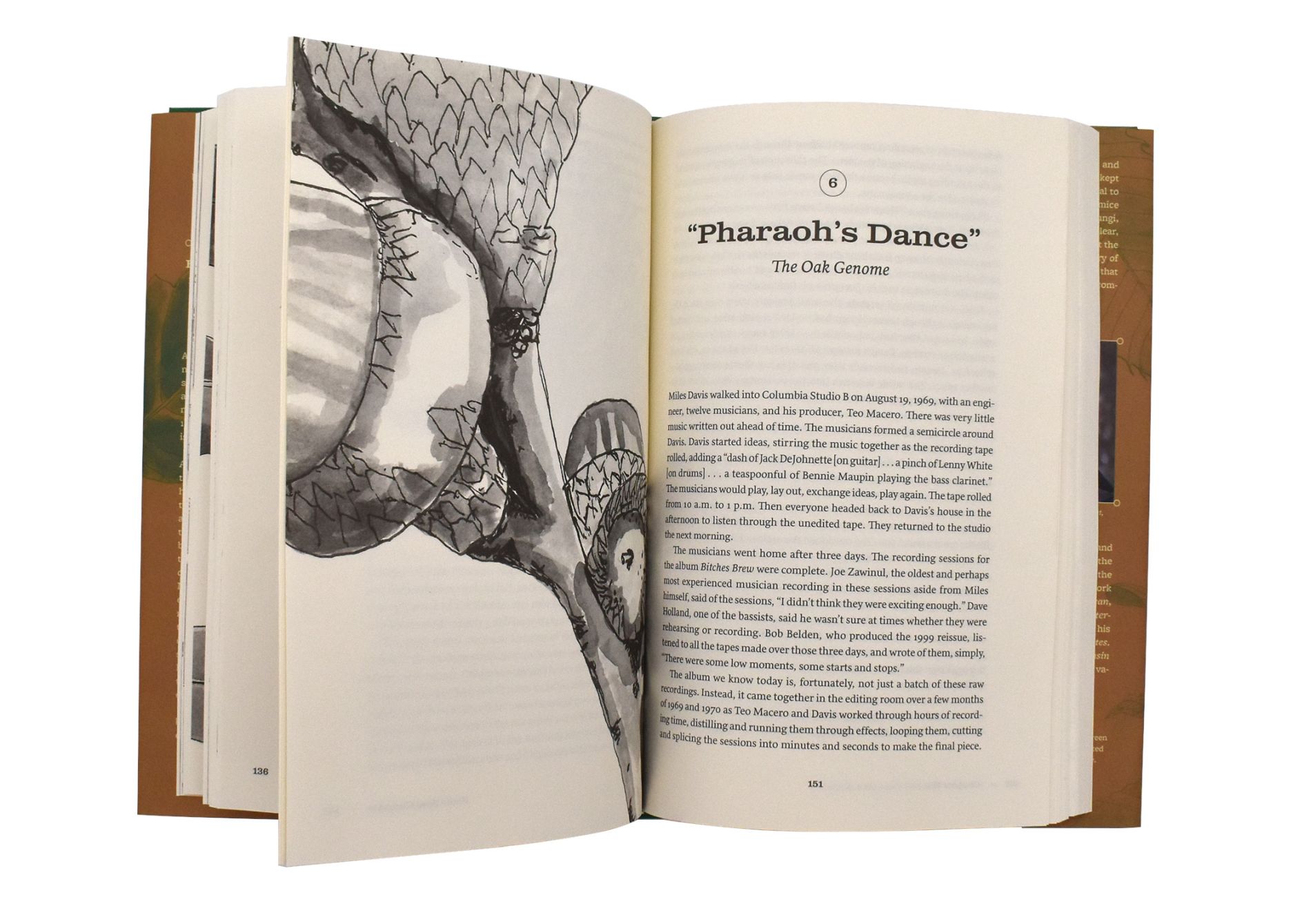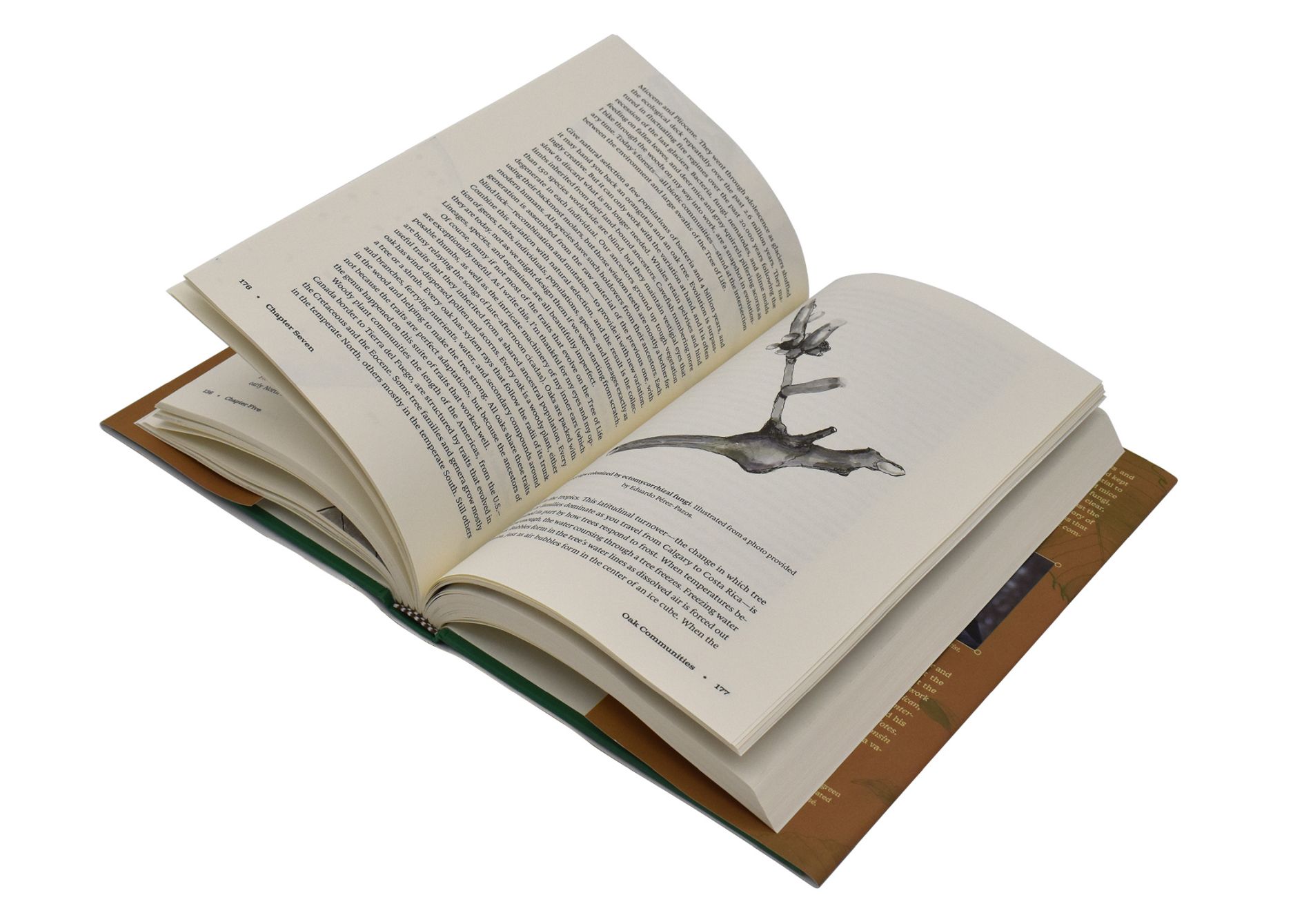“In Oak Origins, the evolutionary biologist Hipp traces Quercus’s mighty family tree back millions of years to its modest roots, when a single population began to diverge from its relatives in the beech family. How did oaks evolve into so many species? Why were they able to spread so widely? And what is their future likely to be? . . . Hipp writes lucidly, and even lyrically in places, such as his brief evocations of spring and autumn in the upper Midwest and his extended metaphor likening oaks’ genetic recombination to Miles Davis’s ‘Pharaoh’s Dance.’ . . . [A] rich and thoughtful account.”
Gerard Helferich | The Wall Street Journal
"Oak Origins illuminates thoroughly both the great trees that are its subject and the part they play in the tree of life. It is dense with detail, and through it we learn about wasps and jays, fungi and human migration—countless parts of the world's ecology that touch oaks and 'ferry sun-energy through the forest.' . . . . Although the wood can be rigid, the living tree's organization and diversification are not, as Hipp's book amply demonstrates. Anyone working in the environmental sector or with a passing interest in oaks should read it."
Times Literary Supplement
"In many parts of the world, if you take a walk in the woods, you are likely to encounter an oak tree. With 425 species worldwide, their collective abundance may lead one to believe these trees are somewhat unremarkable—a fixture we take for granted. But Hipp, a botanist and research director at the Morton Arboretum in Illinois, reveals that oaks are a dynamic and essential part of the forest. . . . Oaks’ capacity to hybridize without merging brings out fascinating nuances in the so-called Tree of Life. . . . Hipp gently guides readers through these complexities, laying the groundwork for lucid explanations about the trees’ evolution and biology. . . . Oaks are primed with genetic flexibility that allows them to solve ecological problems. But the current rise in global temperatures far outpaces its fastest previous climb, posing a problem even these 'protean' adapters cannot solve without human intervention. Hipp’s work shows that conserving oak species will preserve invaluable nodes in our genetic web."
Dana Dunham | Scientific American
"Hipp’s protagonists in Oak Origins are oak trees, of which there are hundreds of species, and with genetics as his guide, Hipp expertly tells the story of how these species came to be and manage to keep on being. . . . The patience with which he explores and explains the morphology and evolutionary history of oak trees carries within it the timbre of a quiet hymn sung in praise of this divine-like fact: We organisms enjoy the privilege of living only because our genes are tethered through time to the Tree of Life that birthed us all. . . . Hipp’s book has deepened my understanding of and appreciation for the Quercus (oak), Carya (hickory), Acer (maple) and Pinus (pine) that populate my yard and spread their seed. May their resiliency and optimism for the future be our own."
Patrick Roberts | Newcity
"[Oak Origins] drops extraordinary nuggets. Or perhaps I should say acorns, as the nut of Quercus is intrinsic to its success story. . . . The oak, proposes Hipp, is ‘The Tree of Life’, the connector between all living things on Earth. Its ancestors knew the dinosaurs, it is home to more than 1,000 species of fauna and flora and today provides the US alone with $22 billion annually in pollution and climate-change mitigation. He has a point."
John Lewis-Stempel | Country Life
"Today, there are approximately 425 living species of oaks. Hipp, the herbarium director at Morton Arboretum, explains how these species evolved as their distant ancestors gradually dispersed across the continents and adapted to diverse ecosystems. On top of this epic story, he layers the history of scientific understanding of species: the term’s definition, the relationship between modern and extinct species, and the types of evidence for identifying and studying species. . . . Highly recommended."
Choice
"A stimulating exploration of oak tree biology. . . . Hipp brings a lyrical sensibility to the botany, comparing the genetic recombination that occurs during oak reproduction to Miles Davis’s splicing and remixing snippets of recordings to create his song 'Pharaoh’s Dance,' and Rachel D. Davis’s black-and-white watercolors provide dreamlike illustrations of the plants discussed. Nature lovers will get a kick out of this."
Publishers Weekly
"The book is very well-written, with an engaging style, great imagery, and often appears to have been penned with the soul of a poet (or, at least, a careful observer of nature). . . . A fascinating tale of the evolutionary origins and development of oak trees and the important role they play in the colonising and greening of the land by plants, and the ecology of the planet. Along the way you will learn a lot about oak biology—reproductive strategies in particular—and receive a very good grounding in the intricacies of plant genetics and an understanding of ‘how species come to be.'"
Nigel Chaffey | Plant Cuttings
"[Hipp] succeeds—emphatically. . . . I think this will prove to be one of the most important books written about the genus Quercus to date. It’s a work to be read and re-read, frequently. In her lyrical foreword to the book, Chassé writes that “ike me, I am sure you will turn the last page with some of your questions answered, some of your answers questioned, and some new ideas perhaps already become questions.” Indeed. I can’t imagine an International Oak Society member who wouldn’t be delighted, intrigued and inspired by Hipp’s magisterial gift to us."
Steve Potter | Oak News & Notes
"The book, entertaining and enjoyable from the first to the last line, helps us better understand evolution at all its levels, from genes to the tree of life."
M. Socorro González Elizondo | Macpalxóchitl
“In this authoritative and engrossing book Hipp comes closer than any other author that I'm aware of to making sense of this bafflingly complex story. . . . It manages to be both a work of great scholarship and a paean of praise to such charismatic trees.”
Quarterly Journal of Forestry
"This book on oaks is like a journey—or rather, several journeys—through space, time, and theory. It touches on many
cultural and historical aspects, making it a cultural–historical journey as well—from the development of plant systematics through the concepts of evolution and species, to the tree of life, and eventually to the oak tree of life . . . Overall, this publication serves as a solid scientific work and an accessible educational resource, making it valuable for readers at all levels who are interested in oaks."
Conservation Biology
"Oak Origins is an excellent monograph. Scholarly and public audiences interested in learning more about evolutionary biology, botany, or just oak trees will enjoy Hipp’s work."
H-Net Reviews
“It is an extraordinary challenge to make a top-notch work of scholarship palatable for the general public, but Hipp has easily met that challenge in Oak Origins. Everything you ever wondered about oaks, and so much more that you didn’t know enough to wonder about, is packed into this definitive work on one of our most important trees. From pollen tube competition, to the oak lineage’s earliest ancestors, to the vital roles oaks play in ecosystems across the world, each account is more interesting than the last. A fascinating read from start to finish.”
Douglas W. Tallamy, New York Times best-selling author of "Nature’s Best Hope," "Bringing Nature Home," and "The Nature of Oaks"
"Oaks are strong and sturdy, adaptable and beautiful, and the same can be said for Hipp’s joyful book Oak Origins. Hipp, director of the herbarium at the Morton Arboretum near Chicago, is a world expert on tree genetics and evolution, and with his new book, proves that he has science writing chops as well. In his meditation on oaks, he uses these familiar trees to explore the wonders of plants, ecosystems, evolution, and Earth history. I grew up amongst the oaks in Illinois. A few huge ones towered over our backyard, but I didn’t think much of them until one was felled by lightning, and all of a sudden, our home was less vibrant with birds and insects. After reading Hipp’s book, I understand why: oaks are the nexus of a hidden world of diversity and beauty, which we must preserve as climates and environments change rapidly around us."
Steve Brusatte, professor and paleontologist at the University of Edinburgh and New York Times best-selling author of “The Rise and Fall of the Dinosaurs”
“In this brilliant exploration, oaks emerge as jazz musicians, continually improvising, collaborating, and finding new living music over millions of years. We think of oaks as hard and unyielding, but Hipp’s compelling writing reveals them as supple and inventive, from genes, to physiology, to their ecologies.”
David George Haskell, William R. Kenan Jr. Professor of Biology, Sewanee: The University of the South, and the author of "Sounds Wild and Broken," "The Songs of Trees," and "The Forest Unseen"
“Elegantly written and authoritatively researched, this book takes us around the world and down into the archives of deep time—from Oaxaca to Wuyi-shan, from the Norse World-Tree to the Darwinian Tree of Life—exploring the surprisingly rich, diverse, and ancient botanical world that has sprung forth from the humble acorn.”
Robert Moor, New York Times best-selling author of "On Trails: An Exploration"
“Oak Origins: From Acorns to Species and the Tree of Life is a captivating combination of oak natural history and evolutionary biology. A must read for anyone interested in oaks or biodiversity science.”
Jonathan B. Losos, author of "The Cat’s Meow" and "Improbable Destinies"
“Oak Origins: From Acorns to Species and the Tree of Life is an essential read for anyone attempting to understand the fundamental but truly complex biology of the oaks. The volume provides a clear analysis of the diversity of oaks, oak hybridization, oak communities, the oak genome, and the impressive global radiation and distribution of the oaks.”
Michael A. Steele, Department of Biology, Wilkes University, and author of "Oak Seed Dispersal: A Study in Plant-Animal Interactions"
“One of the premier naturalists and evolutionary biologists of our time, Hipp weaves together the deeply compelling origin story of the oaks―at once scientifically rigorous and accessible to all. Hipp pieces together botanical details of reproductive biology with the complex science of gene evolution, fossil data, and ecological observations to bring to life the incredible story of the northern hemisphere’s most adored and important tree genus. A literary accomplishment, illustrated with exquisite botanical drawings, Oak Origins will give the reader a profound appreciation of how the trees around us came to be here in such abundance. I recommend this book to anyone who has ever picked up an acorn and wondered how it could one day become one of the most iconic and revered standing giants in our midst.”
Jeannine Cavender-Bares, director, Harvard University Herbaria
“There is poetry, suspense, and humor in Andrew’s science, and in his writing. You can enter his story in many different ways, but, once you are in it, you will be captivated.”
Béatrice Chassé, former president of the International Oak Society, from the foreword
"This book on oaks is like a journey—or rather, several journeys—through space, time, and theory. It touches on many cultural and historical aspects, making it a cultural–historical journey as well—from the development of plant systematics through the concepts of evolution and species, to the tree of life, and eventually to the oak tree of life. . . . Overall, this publication serves as a solid scientific work and an accessible educational resource, making it valuable for readers at all levels who are interested in oaks."
Conservation Biology




